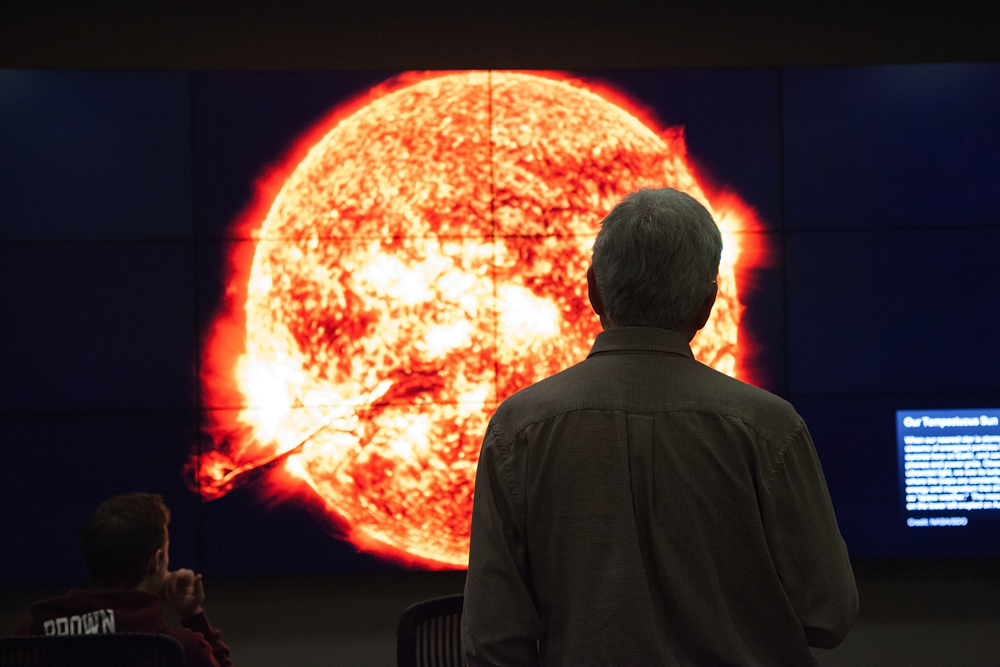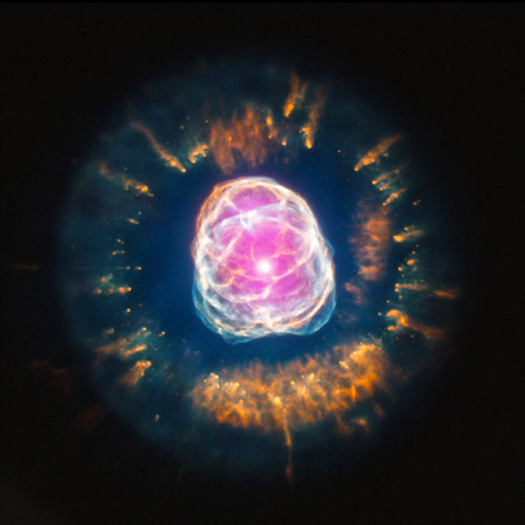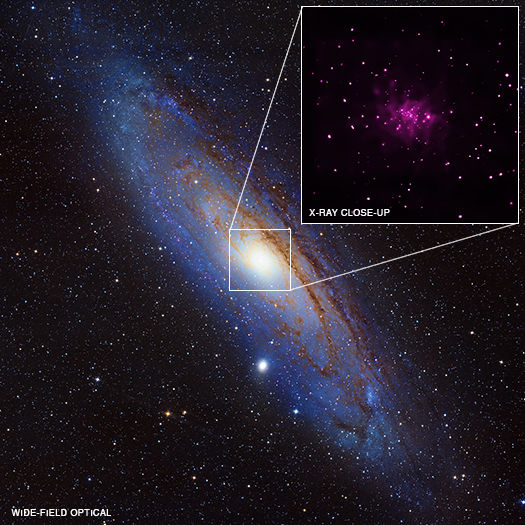A Gallery of Cosmic Fireworks
Submitted by chandra on Wed, 2013-07-03 16:39Note: An earlier version of this article appeared on this blog by Peter Edmonds.
Last week at the Chandra X-ray Center we celebrated July 4th a week early with this new image of cosmic fireworks. This is G1.9+0.3, the youngest remains - as seen from Earth - of any supernova in our galaxy. If gas and dust had not heavily obscured it, the supernova would have been visible from Earth just over a century ago.
The Remarkable Remains of a Recent Supernova
Submitted by chandra on Wed, 2013-06-26 10:24Black Hole Bonanza Turns up in Galaxy Next Door
Submitted by chandra on Wed, 2013-06-12 10:45Black Hole Hunting in the Andromeda Galaxy
Submitted by chandra on Wed, 2013-06-12 10:41
We are delighted to welcome Robin Barnard as a guest blogger today. Robin is currently a research fellow at the Harvard-Smithsonian Center for Astrophysics; originally from the UK, he has greatly enjoyed living in the US for 3 years. He got his PhD at the University of Birmingham, and a MPhys (Hons) in Physics with Astrophysics from the University of Manchester; thanks to a quirky convention, he has considerably more letters after his name than in it! He was previously employed as a research fellow at the Open University.
I came to the USA to hunt black holes. Not nearby ones (that might be a bit scary), but ones in the nearby spiral galaxy known as the Andromeda Galaxy, or M31. As Grant & Naylor pointed out in the BBC TV series Red Dwarf: the thing about black holes, their main defining feature, is that they’re black; and the thing about space, the basic space color, is it’s black. This makes lone black holes very hard to see! However, black holes that are able to snatch material from an orbiting companion star can release huge amounts of energy, mostly as X-ray radiation. Such systems are called X-ray binaries (XBs), and neutron star plus normal star XBs are also possible (and indeed are more common). In our Galaxy, black hole binary systems with low-mass companions go unnoticed for long periods of time, occasionally exhibiting huge outbursts in X-rays; for this reason, they are known as X-ray transients. The similarity between known black hole X-ray transients and other low-mass X-ray transients suggests that most low-mass X-ray transients contain black holes.
Transforming Science into Sound
Submitted by chandra on Tue, 2013-06-04 10:47A new recently announced project is showing how science and art are not so far apart. In this case, the science in question is data from NASA's Chandra X-ray Observatory. The art that is involved is music.
This project is called "Star Songs" and was started by Wanda Diaz Merced who came to visit the Harvard-Smithsonian Center for Astrophysics (CfA) in 2011, where Chandra's Science Center is located, to work on her doctoral dissertation. Diaz Merced, who lost her sight while studying physics in her early 20s, had been using sonification - a technique to display data as sound - to continue her astrophysical research.
A Hidden Population of Exotic Neutron Stars
Submitted by chandra on Wed, 2013-05-22 23:57This graphic shows an exotic object in our galaxy called SGR 0418+5729 (SGR 0418 for short). As described in our press release, SGR 0418 is a magnetar, a type of neutron star that has a relatively slow spin rate and generates occasional large blasts of X-rays.
The only plausible source for the energy emitted in these outbursts is the magnetic energy stored in the star. Most magnetars have extremely high magnetic fields on their surface that are ten to a thousand times stronger than for the average neutron star. New data shows that SGR 0418 doesn't fit that pattern. It has a surface magnetic field similar to that of mainstream neutron stars.
Telling Stellar Stories
Submitted by chandra on Mon, 2013-05-20 15:31
What are digital stories and how do you tell them? At a recent exhibit at Brown University, that topic was examined in a few different ways. One of the stories shown was a large screen version of images and text selected out of the "From Earth to the Universe" (FETTU) collection. FETTU is a Chandra-led project of astronomical image exhibits that began in the International Year of Astronomy in 2009 but has remained as a legacy project of public science. The location types of the FETTU exhibits have ranged from cafes to malls to metros.
Exhibiting FETTU with Brown University's large visualization wall in the Rockefeller library offered a special opportunity to display ultra-large astronomy data sets on a huge screen that lets the viewer not only see details in the images that are hard to see on small screens but also helps the viewer feel somewhat immersed in the image. The science images included Chandra’s composite with Hubble and Spitzer of the galactic center, a recent Solar Dynamics Observatory image of our Sun (shown here), an image of Mount Sharp, Mars from the Curiosity mission, and 5 other objects.
Black Hole Powered Jets Plow Into Galaxy
Submitted by chandra on Wed, 2013-05-15 11:04This composite image of a galaxy illustrates how the intense gravity of a supermassive black hole can be tapped to generate immense power. The image contains X-ray data from NASA's Chandra X-ray Observatory (blue), optical light obtained with the Hubble Space Telescope (gold) and radio waves from the NSF's Very Large Array (pink).
Heads Up! Avoiding Collisions in Space
Submitted by chandra on Tue, 2013-05-07 16:25Recently, the Fermi team announced that the spacecraft dodged a very large bullet in the form of a defunct Soviet spy satellite: http://www.nasa.gov/mission_pages/GLAST/news/bullet-dodge.html. The close encounter with Cosmos 1805 was reminder that even though space is very large, there are some real threats to our invaluable telescopes that are in orbit.
Pages
Please note this is a moderated blog. No pornography, spam, profanity or discriminatory remarks are allowed. No personal attacks are allowed. Users should stay on topic to keep it relevant for the readers.
Read the privacy statement









